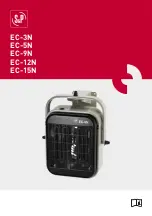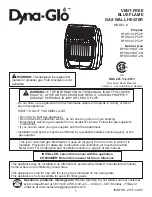
Table of Contents
6
1.1 A general description of how a DHWS operates
6
1.2 Performance of a solar domestic water heater
7
1.3 Need for an auxiliary heater
8
1.4 Heat losses during the night
8
1.5 Use of hot water in a household
8
1.6 Clothes washing
9
1.7 Dishwashing with solar hot water
9
1.8 Efficient use of a solar domestic hot water system
9
1.9 Use of the back-up heating system (electric heater)
10
1.10 Freezing weather conditions
11
1.11 Summer holidays
11
12
2.1 Normal operation (heating water by the sun)
12
2.2 Operation using the back-up electric heater.
12
13
3.1 Regular inspections by the owner
13
3.2 Regular maintenance by an authorized dealer or
the Service Department of SUN&HEAT
13
16
4.1 Components of the solar water heater
16
4.2 Necessary special tools and materials
16
4.3 Removing packaging
16
4.4 Collector orientation
19
4.5 Site
19
4.6 Assembly of the mounting frame
19
4.7 Fastening the collector on the mounting frame
23
4.8 Mounting the hot water storage tank
25
4.9 Installing the connection pipes between the storage tank
and the collector
25
4.10 Connection to cold and hot water networks
29
4.11 Fastening the mounting frame to the floor of the roof
30
4.12 Filling the storage tank with water
30
4.13 Filling the closed loop with the heat transfer fluid
4.14 Mounting the closed loop expansion tank & safety valve
33
4.15 Electrical connection of the electric heater
33
4.16 Exposure of the solar water heater to the sun
34
4.17 Additional installation tasks
34
35





































